The banana plant grows from a large part of the rhizome. The fruit grows in large hanging bunches where it has about 10 to 20 fingers. A banana cluster is called a hand and a banana is called a finger. There are many varieties of small or Dwarf banana plants that can be grown indoors or outside throughout the year depending on climate. Let’s check out best fertilizer for Banana plants.
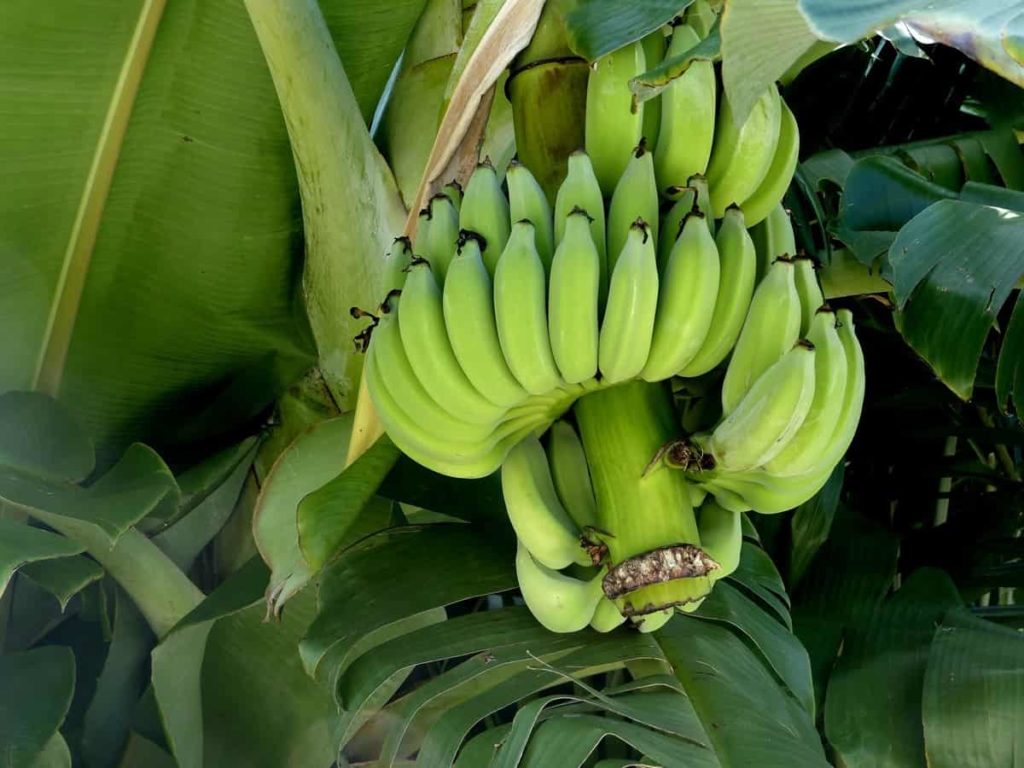
But one thing that all Banana trees have in common is their quality fertilizer is needed, which will not only help the tree stay healthy and strong but also give the largest production of healthy fruits. Banana trees will thrive in the growing season if enough amounts of nitrogen (N), phosphorus (P), potassium (K) are provided. Feed regularly using chemical fertilizers or organic fertilizers.
You can choose to use regularly balanced fertilizer that contains all the micro and secondary nutrients required by the plant or distribute food according to the growing needs of the plant. For example, apply high nitrogen-rich manure once a month during the growing season and then cut back when the plant flowering. At this point, switch to high phosphorus or high potassium fertilizers.
Fertilizing a banana plant with extra nutrients is quite rare. If you suspect any deficiency, sample and analyze the soil, then feed as per the results as needed. All types of banana trees are heavy feeders. They need high-quality, frequent doses of fertilizers to be strong and healthy to produce a large production of delicious fruits.
Best fertilizer for Banana plants
Manure
Manure is rich in nitrogen, potassium, and phosphorus that banana trees need to thrive. Provide plenty of fertilizer by piling around the base of the plant, but do not allow fertilizer to get directly in touch with the stem. If fed with organic manure, there is no need to worry about over-composting your banana tree.
In case you miss this: Banana Planting Questions and Answers – (FAQs)
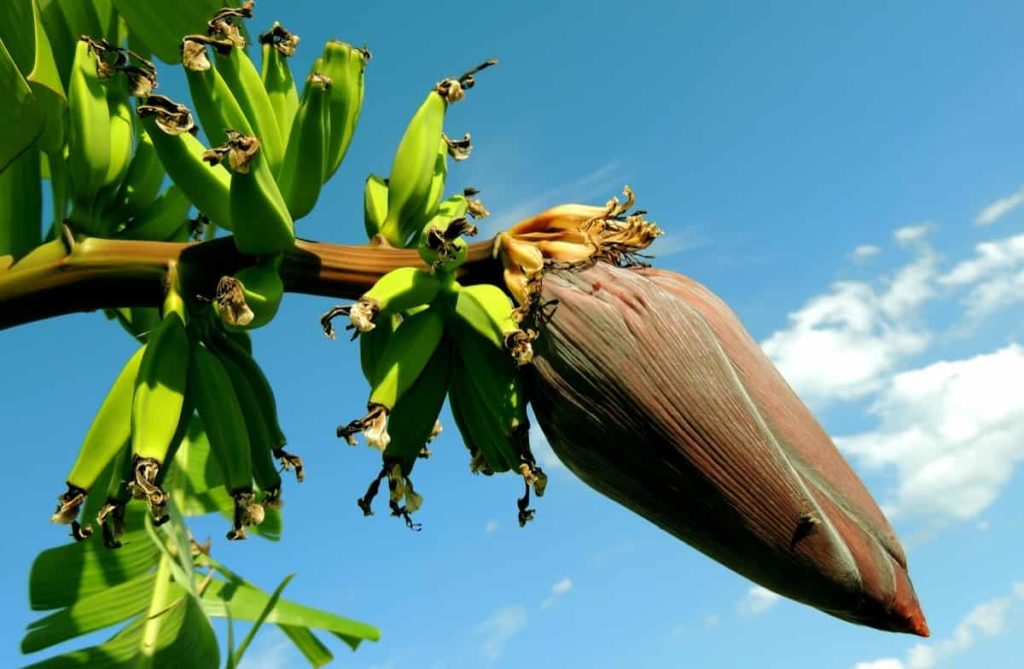
Coffee Grounds
Coffee grounds are a huge source of nitrogen for Banana trees and can be added either directly to the soil. Coffee grounds are neutral in pH, so they should not change soil acidity. Just spread the used coffee ground around the base of your banana tree, and either loosely dig the ground into the topsoil or let them sprinkle over the soil. Water regularly. Water banana trees as needed with water filled with coffee by adding ground to water and allowing the grounds to soak overnight.
Green manuring
Green manuring is a practice of growing a short-term, juicy, and leafy legumes crop and plowing plants in the same field before making seeds. The manuring of green leaves refers to adding loppings from legume plants or trees to a field and then plowing and adding them to the soil. Green manuring improves nitrogen use efficiency.
In case you miss this: Banana Growing Tips, Techniques, Ideas, and Secrets
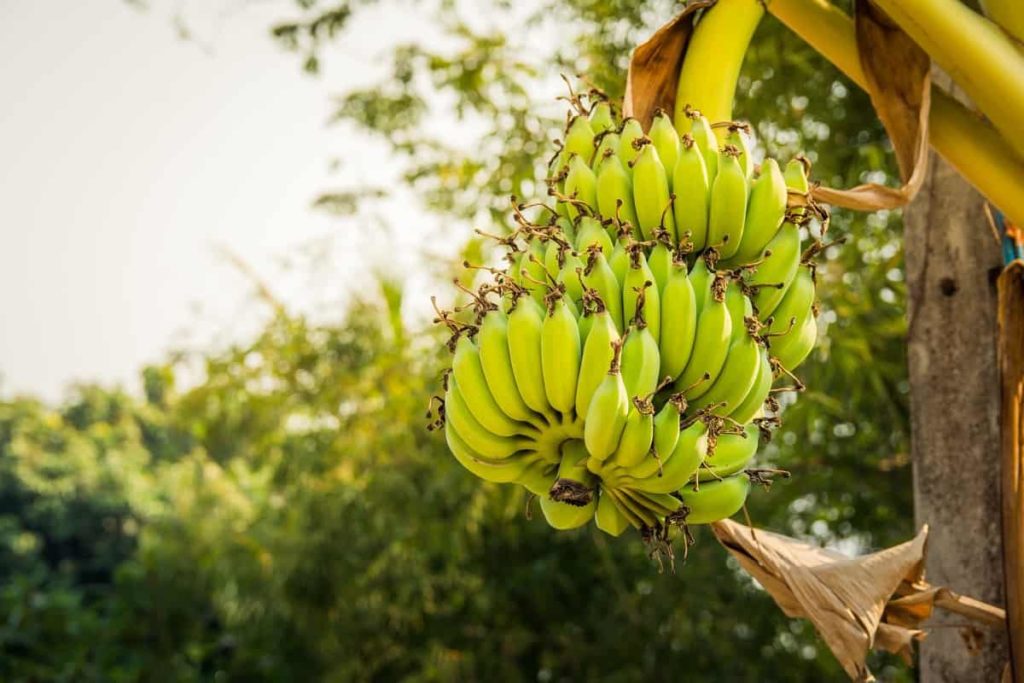
Vermicomposting
Vermicomposting is a type of compost making in which sludge is used to convert organic waste into valuable materials to supply nutrients for crops. This fertilizer is a smell-less, clean, organic material containing adequate quantities of N, P, K, and several micronutrients required for plant growth.
Coir pith
Coir pith is also known as coco peat or coir dust. This includes all macros and micronutrients like N, P, K, Ca, Cu, Mg. This increases the capacity to hold water. It Enhances the deep root system.
Commercial fertilizers for Banana plants
Nitrogen
Nitrogen is important for the growth of the Banana plant, helping in the production of chlorophyll and ensuring that your plant produces enough strong, healthy green leaves, which means good fruit production. Enough nitrogen, especially when the plant is small, will ensure that you get well-sized and abundant fruits. Symptoms of nitrogen deficiency include yellowing of leaves, rose color on the petioles, overall plant stunts, poor growth, poor or no crop, and rapid leaf death.
Potassium
Potassium is another nutrient that is essential for the growth and health of the Banana plant. Symptoms of banana plants Lack of potassium: Small yellow leaves, Late growth of banana bunches, Low yield.
In case you miss this: Banana Peels In Garden – Compost Process, Fertilizer

Other nutrients
The best banana fertilizers contain both macro and micronutrients, as banana plants need both survival and flourishing. In addition to nitrogen and potassium, banana plants need macronutrients such as phosphorus, magnesium, calcium, and sulfur, as well as micronutrients such as boron, zinc, and iron.
The balanced fertilizers for banana trees will contain all the macros and micronutrients of the Banana plant’s needs, ensuring that it grows faster, stays healthy, and produces a good crop of high-end fruits. Basically, banana trees require nitrogen, phosphorus, and potassium, otherwise are known as NPK for fertilization. The higher the number, the more concentrated the nutrients. You can first check until you can get the right formula depending on the plant requirement.
Nitrogen should be high in normal cases but if it seems inefficient you can increase the amount of potassium or phosphorus. You should know that Bananas are considered heavy feeders, they need regular fertilization to become productive. It is also multi-manure. It is one of the best fertilizers for banana trees as it has more benefits than regular trees.
When and how to fertilize a Banana plant/schedule
- Banana trees are heavy feeders so they need to be composted regularly to be productive. There are a couple of ways to feed the plant.
- When fertilizing a mature Banana plant, use 680 grams of 8-10-10 per month. For dwarf indoor plants, use half of that amount.
- Dig this amount around the plant and let it dissolve every time the plant is watered. Or you can give it a slight use of fertilizer whenever the banana is watered.
- Mix the fertilizer in water and apply it while irrigating.
- When the soil dries up to about 1 centimeter, water, and fertilize again.
In case you miss this: Growing Banana Plants In Backyard – Planting Guide
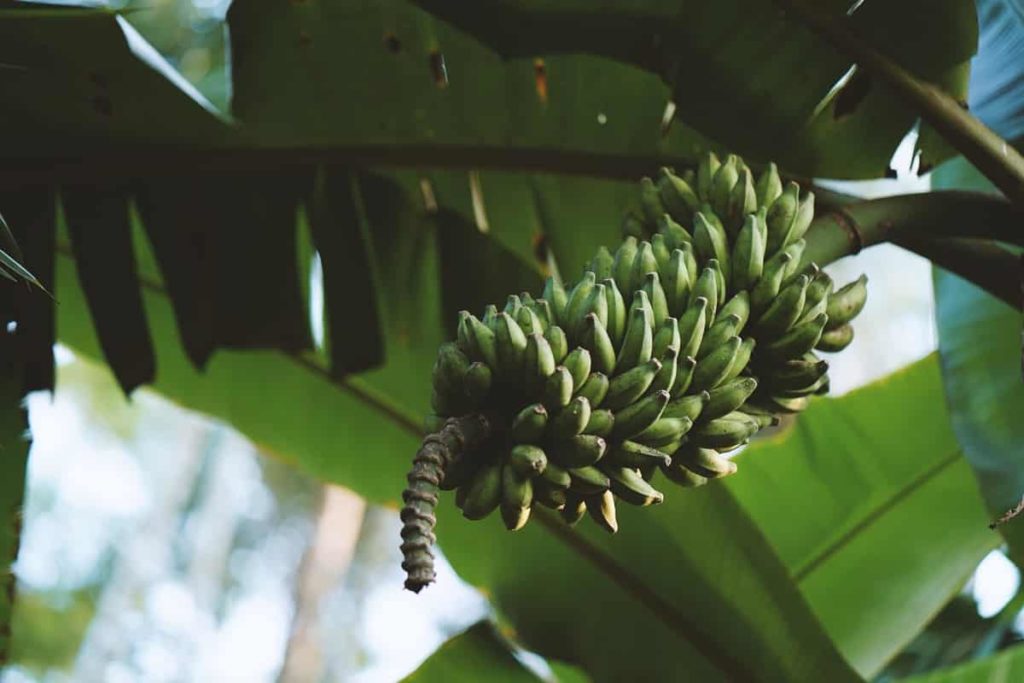
- If you are choosing to use high nitrogen and high potassium fertilizers, the method is a little different. As per the manufacturer’s instructions, add more nitrogen food to the soil once a month during the growing season.
- When the plant starts to bloom, cut back more nitrogen fertilizer and turn into a fertilizer that is high in potassium. If the soil has 6.0 or less pH or stops composting when the plant starts to grow.
- If you get out of getting your soil tested, use 6-2-12 manure with magnesium when the plant is going into its first bearing year.
Fertilize the Banana in the pot
If you want to grow Bananas in pots, you should ensure good early conditions from the start. The soil of special citrus or Mediterranean plants is very suitable as a substrate. However, in principle, any flower or garden soil available commercially can also be used. However, make sure that soil is viable to avoid waterlogging.
Apart from regular watering, from now on you can also regularly compost to meet banana nutritional needs and help it perform at its best. From March to October, you can apply liquid fertilizer to irrigation water every week.
In case you miss this: Growing Banana in Containers – A Full Guide
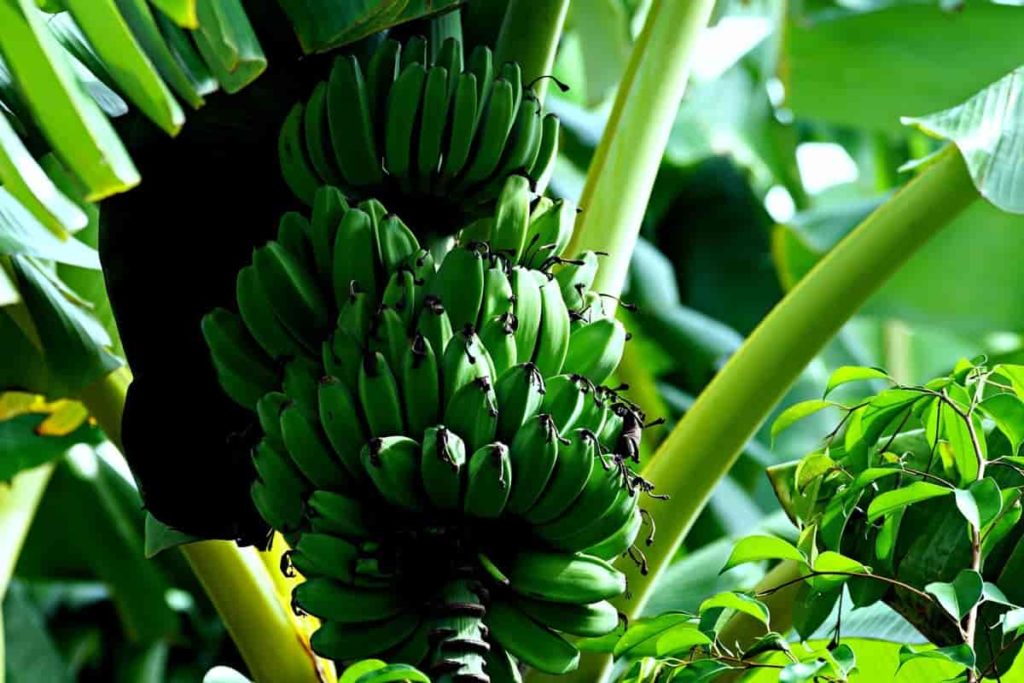
To avoid overfertilization, it is advised to use primarily organic fertilizer and draw yourself on the quantities prescribed on the packaging. During the winter relaxation phase, you should reduce the amount of fertilizer in any case and only compost every six to eight weeks. Depending on the growth of the plant, you should report the Banana tree every one to two years and replace the substrate with a fresh tree to provide the plant with new nutrients.
- Flower Garden Designs and Layouts for Beginners
- Planting and Spacing Techniques in Papaya: A Beginner’s Guide
- Growing Gold: Essential Techniques for Planting Pineapples
- How to Make Kalanchoe Plant Bushy: Home Remedies and Solutions
- 11 Reasons Why Your Gardenia is Not Blooming: Home Remedies and Solutions
- Eco Elegance: The Guide to Designing a Drought-Tolerant Landscape
- Gardening on a Slope: Strategies for Hillside Landscaping
- Nourish and Flourish: Top Organic Mulches for Thriving House Plants
- Everything You Want to Know about Indian Mogra Flower: Discover Uses and Growing
- Green Thumb Success: Expert Tips for Cultivating Greenhouse Pumpkins All Year Round
- Maximize Growth & Flavor: The Ultimate Guide to Companion Planting in Herb Gardens
- How to Control Rhododendron Problems Naturally: Home Remedies and Organic Ways to Fix Them
- Natural Magic: The Remarkable Benefits of Cinnamon for Plants
- Best Steps to Revive Dying Tulip with Natural and Organic Treatment
- 10 Reasons Why Your Angel Trumpet is Not Blooming: Remedies and Treatment
- How to Fix Periwinkle Leaf and Flower-Related Problems: Natural Remedies and Solutions
- How to Fix Zinnias Leaf and Flower Problems: Discover Natural and Home Remedies
- Organic Steps to Induce Lemon Tree Flowers: A Comprehensive Guide
- Bloom Booster: Crafting the Perfect Homemade Bougainvillea Fertilizer
- Optimizing Growth: A Guide to Applying NPK Fertilizer for Potted Plants
- 10 Best Homemade Fertilizers for Rubber Plant: DIY Recipes and Application Method
- How to Boost Female Pumpkin Flowers: Effective Steps for More Flowers and High Yields
- Transform Your Indoor Garden: Top Benefits of Pink Salt for Houseplants
- 10 Best Homemade Fertilizers for Peacock Plants (Calathea): Easy DIY Guide
- Unlock Blooms: 9 Reasons Why Your Potted Chrysanthemum is Not Blooming
- 8 Reasons Why Your Potted Hibiscus is Not Blooming: Fix it with Simple Solutions
- Unlock Blooms: 9 Key Reasons Your Potted Frangipani Won’t Flower
- 10 Reasons Why Is My Ice Plant Not Blooming: Remedies and Treatment
- 10 Reasons Why My Potted Hydrangea Not Blooming: Treatment and Remedies
- 10 Reasons Why is My Wisteria Not Blooming: Remedies and Treatment
- 10 Reasons Why is My Goldfish Plant Not Blooming: Remedies and Treatment
- Maximize Your Space: Ultimate Guide to Balcony Gardening with Grow Bags
- 10 Reasons Why Your Iris is Not Blooming: Remedies and Treatment
- 10 Reasons Why Your Anthurium Plant is Not Blooming: Treatment and Remedies
- 10 Reasons Why Your Aquaponic Plants Are Not Flowering: Remedies and Treatment
- 10 Reasons Why Your Agapanthus is Not Flowering: Remedies and Treatment